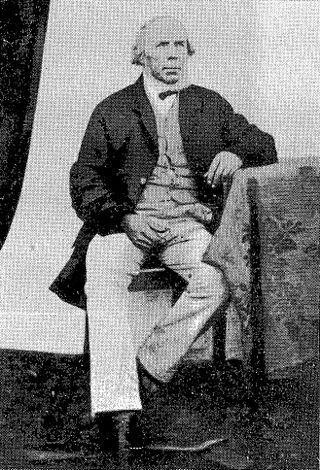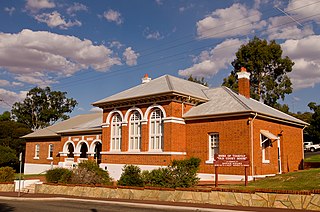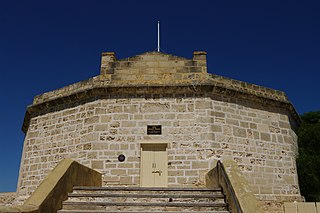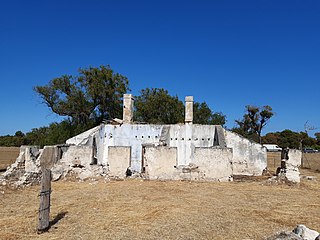Related Research Articles

The National Trust of Australia, officially the Australian Council of National Trusts (ACNT), is the Australian national peak body for community-based, non-government non-profit organisations committed to promoting and conserving Australia's Indigenous, natural and historic heritage. The umbrella body was incorporated in 1965, with member organisations in every state and territory of Australia.

Toodyay, known as Newcastle between 1860 and 1910, is a town on the Avon River in the Wheatbelt region of Western Australia, 85 kilometres (53 mi) north-east of Perth. The first European settlement occurred in the area in 1836. After flooding in the 1850s, the townsite was moved to its current location in the 1860s. It is connected by railway and road to Perth. During the 1860s, it was home to bushranger Moondyne Joe.

Woodbridge is a suburb of Perth, Western Australia, located within the City of Swan local government area. Formerly part of Midland and previously informally named West Midland, its name is from the original farm established in 1830.

The Barracks Arch is located on the corner of Malcolm and Elder Streets, at the western end of St Georges Terrace in Perth, Western Australia.

Avondale Agricultural Research Station or Avondale Discovery Farm is one of thirteen research farms and stations operated by Western Australia's Department of Agriculture and Food. In addition to its research, Avondale has historical buildings, a farming equipment museum and operates as an agriculture education centre specialising in introducing primary school children to farming, and teaching of its history in Western Australia.

James Drummond was an early settler in Western Australia, and a member of the Western Australian Legislative Council from 1870 to 1873.

The Shire of Toodyay is a local government area in the Wheatbelt region of Western Australia, beyond the north-eastern limits of the Perth metropolitan area. The Shire covers an area of 1,694 square kilometres (654 sq mi), and its seat of government is the town of Toodyay.

The Western Australian Planning Commission (WAPC) is an independent statutory authority of the Government of Western Australia that exists to coordinate strategic and statutory planning for future urban, rural, and regional land use. WAPC was formed in 1955. The authority is responsible for expenditure arising from the Metropolitan Region Improvement Tax.

Tranby (Peninsula Farm) is an historic farmers cottage located on Johnson Road in Maylands overlooking the Swan River opposite Kuljak Island, and is one of the oldest surviving buildings from the early settlement of the Swan River Colony. It is described as an English cottage-style farmhouse with loft bedrooms and wide verandahs and is associated with a group of devout Wesleyan Methodists, led by Joseph Hardey and other members of his family, who arrived in Western Australia on the ship Tranby in February 1830.
The W.A. Heritage Trails Network is a network of heritage trails and places in Western Australia that was initially funded by the Australian Commonwealth/State Bicentennial Commemorative Program for the 1988 Australian Bicentenary. In many cases local communities and councils collaborated with the National Trust of Australia (WA) to research and develop local trails.

Charles Harper was a pastoralist, newspaper proprietor and politician in colonial Western Australia.

Butterly House, also known as Monger's Cottage, is located at 1A-D Harper Road, Toodyay, Western Australia. The building was the location of the first bank in Toodyay.

The Toodyay Post Office and residence is located in Toodyay, Western Australia on the corner of Stirling Terrace and Duke Street North.

Stirling Terrace is the main street of Toodyay, Western Australia, originally called New Road until 1905.

The former Toodyay Court House in Toodyay, Western Australia has been used as municipal offices for Toodyay since the 1950s.
Toodyay pioneer heritage trail was a trail created by the Toodyay Bicentennial Community Committee in 1988 for the Australian Bicentenary as part of the W.A. Heritage Trails Network.

The State Register of Heritage Places is the heritage register of historic sites in Western Australia deemed significant at the state level by the Heritage Council of Western Australia.

The Bell Cottage ruin is a State Register of Heritage Places-listed ruined Victorian Georgian style cottage in East Rockingham, Western Australia. The ruin is on one of the earliest land grants in the Rockingham area and is one of the oldest structures in the area. It is associated with the Bell family, especially James and Jane Bell, early pioneers in the region. Jane Bell gained public attention in 1840 after the death of her child, conceived after being raped; she was incarcerated for two years on Rottnest Island. In 1876 James Bell was an eyewitness to the Fenian escape from Fremantle Gaol and raised the alarm.
References
- ↑ "National Trust of Australia (WA)". Australian Prime Ministers. Museum of Australian Democracy. Archived from the original on 17 October 2016. Retrieved 10 February 2020.
- ↑ "About us" (PDF). National Trust WA. National Trust of Australia. Archived from the original on 17 April 2018. Retrieved 10 February 2020.
- ↑ National Trust of Australia (W.A.) Act 1964 (WA)
- ↑ State Records Office of WA. "AU WA A991 - NATIONAL TRUST OF AUSTRALIA (WA)". Government of Western Australia.
- ↑ Mann, Trischa (ed.). "National Trust of Australia". Australian Law Dictionary. via Oxford Reference Online, Oxford University Press.
- ↑ Moore, Bruce Moore, ed. (2004). "National Trust". The Australian Oxford Dictionary (2nd ed.). via Oxford Reference Online, Oxford University Press.
- ↑ Witcomb, Andrea; Gregory, Kate; National Trust of Australia (W.A.); Witcomb, Andrea; Gregory, Kate (2009), From the Barracks to the Burrup : the National Trust in Western Australia, National Trust : UNSW Press (published 2010), ISBN 978-1-921410-24-6
- ↑ Twenty-five years of the National Trust in Western Australia. Australian Council of National Trusts. 1984. Retrieved 10 February 2020.